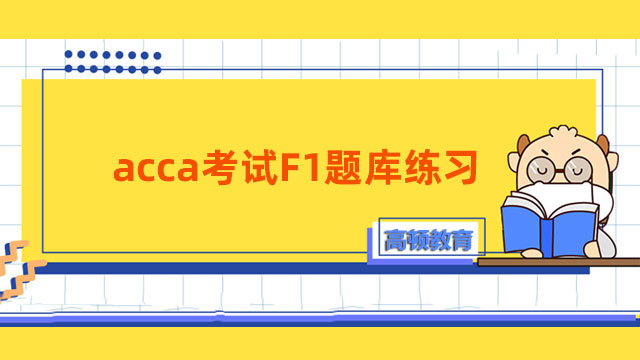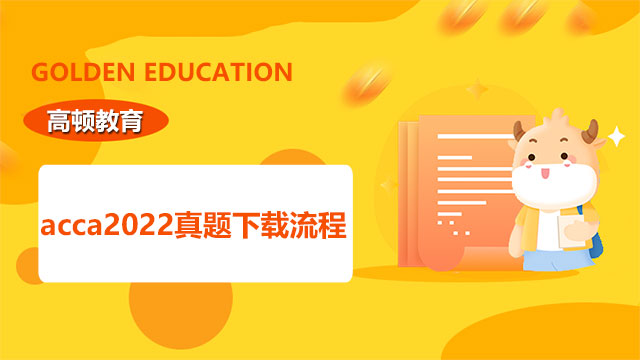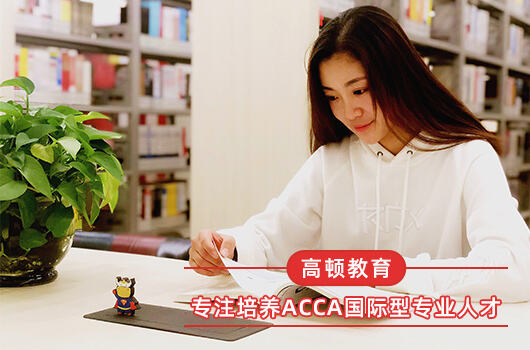ACCA考试P1-P3模拟题及解析11
来源:
高顿网校
2014-07-17
以下是高顿网校小编为学员整理的:ACCA P1-P3模拟题及解析。
World Engines (WE) is one of the largest producers of aircraft and ship engines in the world. It has assets in excess of $600bn. It is currently considering improvements to its marine engine production facilities. These improvements include the introduction of specialist hardware and software engine testing technology. Two companies have been shortlisted for supplying this technology.
Amethyst is a well-established company whose product provides sophisticated testing facilities and costs $7m. The software that supports the product is written in a conventional programming language. The solution is widely used,but it is relatively inflexible and it has an out-of-date user interface. Amethyst has been trading profitably for 20 years and currently has an annual turnover of $960m.
Topaz is a relatively new company (formed three years ago) whose product is more expensive ($8m) but it offers significant advantages in high volume performance and stress testing. It has a modular software design that allows it to be easily maintained and upgraded. It is written in a relatively new powerful programming language and it also has an attractive and contemporary user interface. Topaz currently has a turnover of $24m per year. Some WE executives are concerned about purchasing from such a young, relatively small company, although externally commissioned credit reports show that Topaz is a profitable, liquid and lightly geared company.
On a recent evaluation visit to Amethyst, WE’s complete evaluation team of five people, including the financial specialist, were killed when their aircraft crashed on its approach to landing. It was a small, 12 seat commuter aircraft that was flying the WE team on a short 100 km flight from the international airport to a small rural airport close to Amethyst’s base. It later emerged that small commuter airlines and aircraft were subject to less stringent safety procedures than larger aircraft used by established airlines.
Later that year, one of the divisional directors of WE was given responsibility for picking up and running the testing technology evaluation project. He has found the following table (Figure 1) produced by the financial specialist in the evaluation team who was killed in the air crash. The divisional director recalls that these returns were based on ‘tangible benefits resulting from the two options. The returns reflect the characteristics of the two products. Topaz produces better returns if demand for testing is high, but is less effective in low demand circumstances. This is a reflection of the fact that the two solutions differ slightly in terms of their functional scope and power’.
Figure 1: expected returns for three demand and supplier combinations.
Option Supplier IF High demand IF Low demand
A Amethyst $3m per annum $0·5m per annum
B Topaz $4m per annum $0·1m per annum
The divisional director also recalls a workshop convened to consider future market demand.
‘Demand in the marine industry is currently affected by global economic uncertainty and it is increasingly difficult to predict demand. I remember that we were also asked to estimate demand for our marine products for the next six years. We eventually came up with the following figures, although it was relatively hard to get everyone to agree and debate at the workshop became a little heated’.
– High demand for six years: probability p = 0·4
– Low demand for six years: probability p = 0·4
– High demand for three years, followed by low demand for three years: probability p = 0·2
These figures are confirmed by a document also recovered from the air crash site. ‘As I recall’, said the divisional director, ‘the financial specialist intended to develop a decision tree to help us evaluate the Amethyst and Topaz alternatives. However, there is no evidence that he ever constructed it, which is a pity because we could have taken the procurement decision on the basis of that decision tree’.
Required:
(a) Develop a decision tree from the information given in the scenario and discuss its implications and shortcomings.Ignore the time value of money in your analysis. (9 marks)
(b) The divisional director suggests that the procurement decision could have been taken on the evidence of the decision tree.
Discuss what other factors (not considered by the decision tree analysis) should also be taken into consideration when deciding which option to select. (6 marks)
(c) WE executives are concerned about the risk of Topaz, as a relatively new company, going out of business. They have also expressed concern about the loss of the evaluation team in a fatal accident and they believe that this should lead to a review of the risks associated with employee travel.
Discuss how EACH of the above risks (supplier business failure and employee travel) might be avoided or mitigated. (10 marks)(25 marks)
Answer:

(a) A decision tree for the information in the scenario is given below.
The expected value of Amethyst is:
($18m x 0·4) + ($3m x 0·4) + ($10·5m x 0·2) = $10·5m MINUS cost of $7m = $3·5m
The expected value of Topaz is:
($24m x 0·4) + ($0·6m x 0·4) + ($12·3m x 0·2) = $12·3 MINUS cost of $8m = $4·3m
The analysis suggests that the Topaz option should be chosen.
This decision tree is based on the information available at this point in time. The probabilities set in the workshop are subjective and are not based on an analysis of past statistical data. As the divisional director recalls in the scenario, ‘it was relatively hard to get everyone to agree and debate at the workshop became a little heated.’ The sensitivity of the outcome to slight alterations in probability assessments should be undertaken. It is also unlikely that the predicted returns will be completely accurate. The basis of these estimates is not given, but a further sensitivity analysis, this time focusing on returns, would be valuable. The predicted annual return of Topaz ($4m per annum) under conditions of high demand needs particular attention. This value (and its associated probability) contributes about 78% of the total expected value of this option. If the annual returns are overestimated by 10% (say $3·6m per annum not $4·0m), then this ceases to be the best option.Software prices may also be negotiable, and changes in prices and structure may also need to be experimented with. The decision tree will have been just one input into the procurement decision.
(b) As highlighted in the first part of the answer, the decision tree is only one input to the procurement decision. The scenario states that the returns used in the decision tree analysis were based on tangible benefits. The business case for each option would also have to state intangible benefits offered by each option. For example, the Topaz option offers a more contemporary user interface and this may provide intangible benefits associated with a better user experience. Intangible benefits need to be identified and listed for each option.
Importantly, the risk associated with each option will also have to be considered and documented. An element of this is reflected in the scenario. Amethyst, a well-established supplier, is perceived as a less risky option than the relatively newly formed, smaller Topaz. The relative supplier risk is not reflected in the decision tree. This risk, and other risks identified for each option, must be documented in the business case.
Amethyst option
Topaz option
High p = 0·4
Low p = 0·4
High then low p = 0·2
High p = 0·4
Low p = 0·4
High then low p = 0·2
6 x $0·1m
6 x $4m
3 x $4m + 3 x $0·1m
6 x $0·5m
6 x $3m
3 x $3m + 3 x $0·5m
It may also be necessary to assess the relative impact on the organisation of each option. The options appear to differ in their functional scope and power and these differences might have disproportionate effects on the degree of change necessary within the organisation to accommodate the solution and the effect that each option has on organisational processes and the people with responsibility for those processes.
Finally, an effective selection process should allocate appropriate weight to features associated with the supplier of the solution. This is not just financial robustness, but also factors such as the availability of support, the presence and effectiveness of a user group, process certification etc. Similarly, the product needs to be assessed for functional fitness and for overall product characteristics, such as usability, flexibility and its overall design philosophy. We are told that Topaz is modular and up-to-date and this may be in its favour, but it will not be reflected in the decision tree analysis.
(c) The risk assessment for Topaz has documented concerns about the long-term viability and stability of the supplier. Current financial analysis reveals a profitable, liquid and lowly geared company. However, the company is relatively young and it has a very small turnover compared to WE. It also has to be recognised that WE intends to enter a long-term relationship with this supplier. Hence the continuing success and viability of Topaz is important to WE. A risk avoidance strategy would be to avoid purchasing from small, newly-established companies. Hence Topaz would not be considered.
Should this risk actually take place, and Topaz goes out of business, then its impact may be mitigated by the following:
– The software used in the product is perceived to be innovative, modular and up-to-date. WE should ensure that this software is lodged in an escrow agreement. In such an agreement the source code is stored with an independent third party. If Topaz goes out of business, then their customers (including WE) have access to the software source code which should allow them, or their appointed agents, to maintain and support it.
– WE should also consider establishing in-house expertise in the programming language used by the Topaz product. This could have two objectives:
(1) As a basis for developing a long-term in-house software application that could be used to replace the software elements of the product offered by Topaz. The team could also be used to develop other significant applications required by the company. The software is contemporary and powerful and so other applications within WE should not be difficult to find.
(2) To provide a basis for enacting the escrow agreement if Topaz goes out of business. Access to the source code is particularly appropriate if an in-house team is able to pick up the software, maintain it and develop it.
– WE is a very significant company, with considerable assets. It should be relatively easy for it to maintain funds which could be used for purchasing Topaz should it run into difficulties. Many large companies take this approach as it secures software supply and potentially severs the supply, in this case, of the software to competitors.
WE need to maintain a contingency plan for moving to an alternative supplier or an in-house team. This contingency plan could be linked to monitoring the financial performance of Topaz. Many financial organisations offer a continuous monitoring facility to ensure that suppliers are not just evaluated at the point of purchase, but throughout the subsequent business relationship. This is particularly important when the supplier’s application is business-critical to the customer and any interruption in supply would have significant implications.
The key lessons learned from the fatal air crash should result in WE developing risk avoidance or mitigation actions to make sure that such catastrophic events do not happen again, or, if they do happen, that they have less impact on the organisation.
Potential actions include:
1. Not permitting teams to travel together – the complete evaluation team was in the aircraft. Many organisations insist that key employees do not travel together to conferences and meetings.
2. Looking for safer transport alternatives – the fatal journey was on a small commuter plane travelling a distance which might have been undertaken by car or train. The riskiness of different ways of travelling needs to be considered. Small commuter airlines and aircraft may have less stringent safety procedures than larger, mainstream airlines. Again, this would have to be investigated.
3. Eliminating unnecessary travel – was the journey necessary? Encouraging employees to work from the home or the office reduces the risk of travel accidents by avoiding travel in the first place. The company might not only consider electronic meetings as a way of cutting costs, but also as a way of reducing the chance of fatal travel accidents.
4. Finally, ensuring that all documentation is up-to-date and self-explanatory, so that it can be picked up easily by other employees of the organisation, hence avoiding the situation described in the scenario where the divisional director has to piece together fragments of documentation left by the unfortunate team.
高顿网校小编寄语:希望大家继续努力!打赢ACCA这场仗!

扫一扫微信,*9时间获取2014年ACCA考试报名时间和考试时间提醒
高顿网校特别提醒:已经报名2014年ACCA考试的考生可按照复习计划有效进行!另外,高顿网校2014年ACCA考试辅导高清课程已经开通,通过针对性地讲解、训练、答疑、模考,对学习过程进行全程跟踪、分析、指导,可以帮助考生全面提升备考效果。
报考指南:2014年ACCA考试备考指南
免费题库:2014年ACCA考试免费题库
考前冲刺:ACCA备考秘籍
高清网课:ACCA考试网络课程
报考指南:2014年ACCA考试备考指南
免费题库:2014年ACCA考试免费题库
考前冲刺:ACCA备考秘籍
高清网课:ACCA考试网络课程
版权声明:本条内容自发布之日起,有效期为一个月。凡本网站注明“来源高顿教育”或“来源高顿网校”或“来源高顿”的所有作品,均为本网站合法拥有版权的作品,未经本网站授权,任何媒体、网站、个人不得转载、链接、转帖或以其他方式使用。
经本网站合法授权的,应在授权范围内使用,且使用时必须注明“来源高顿教育”或“来源高顿网校”或“来源高顿”,并不得对作品中出现的“高顿”字样进行删减、替换等。违反上述声明者,本网站将依法追究其法律责任。
本网站的部分资料转载自互联网,均尽力标明作者和出处。本网站转载的目的在于传递更多信息,并不意味着赞同其观点或证实其描述,本网站不对其真实性负责。
如您认为本网站刊载作品涉及版权等问题,请与本网站联系(邮箱fawu@gaodun.com,电话:021-31587497),本网站核实确认后会尽快予以处理。
点一下领资料
【整理版】ACCA各科目历年真题
真题高频考点,刷题全靠这份资料
下载合集
acca全科学习思维导图
梳理核心考点,一图看懂全部章节
下载合集
2023年acca考纲解析
覆盖科目重难点,备考按照计划走
下载合集
acca备考 热门问题解答
- acca考试怎么搭配科目?
-
建议优先选择相关联的科目进行搭配报考,这样可以提高备考效率,减轻备考压力,1、F1-F4:为随时机考科目,难度较低,这里可以自行随意选择考试顺序。2、F5-F9:如果你的工作的和财务会计或者审计有关、或者你比较擅长财务和审计的话,推荐先考F7和F8。你可以选择一起考ACCA考试科目F7和F8或者先考F7(8)再考F8(7),这就要取决你一次想考几门。3、P阶段:选修科目中,建议企业首选AFM!第二部分科目进行选择,如果AA和SBR掌握学生更好,可以通过选择AAA,如果SBL掌握的好,可以自己选择APM。
- acca一共几门几年考完?
-
acca一共有15门考试科目,其中有必修科目和选修科目,考生需要考完13门科目才能拿下证书。
- acca一年考几次?
-
acca一年有4次考试,分别是3月、6月、9月和12月,分季机考科目是采取的这类四个考季的模式,而随时机考则是没有这方面的时间规定限制,可以随报随考。
- acca的含金量如何?
-
ACCA证书的含金量是比较高的,从就业、能力提升、全球认可等角度来说,都是比较有优势的证书,其含金量主要表现在以下几个方面:1、国际化,认可度高;2、岗位多,就业前景好;3、缺口大,人才激励。
严选名师 全流程服务
其他人还搜了
热门推荐
-
acca考试F1题库练习,考生必备! 2023-03-20
-
acca2022真题下载流程介绍,必做考前模考题! 2023-02-24
-
ACCA试卷出题形式?ACCA考试最快多久能通过? 2021-07-24
-
ACCA官方样题 F4(ENG) F8 2021-01-07
-
ACCA考试P1-P3模拟题及解析9 2021-01-07
-
四大会计事务所2017年终精华会评(中) 2018-02-01
-
2016年ACCA F1模拟练习题及答案 2016-02-29
-
2016年ACCA F8每日一练:Professional ethics 2016-01-26
-
2016ACCA考试F8自测题:Corporate governance 2016-01-26
-
关于ACCA考试P7中的专业和道德问题 2015-11-24
-
ACCA P5精选模拟题之战略性绩效考核 2015-10-10
-
ACCA F9模拟测试题之投资评估 2015-10-10
-
ACCA P3精选练习题之战略管理和组织变革 2015-10-10
-
2014年ACCA《公司法与商法》真题及答案七 2015-07-20
-
2014年ACCA《公司法与商法》真题及答案七 2015-07-20
-
2014年ACCA《公司法与商法》真题及答案六 2015-07-20
-
2014年ACCA《公司法与商法》真题及答案五 2015-07-20
-
2014年ACCA《公司法与商法》真题及答案四 2015-07-20
-
2014年ACCA《公司法与商法》真题及答案三 2015-07-20
-
2014年ACCA《公司法与商法》真题及答案二 2015-07-20
-
2014年ACCA《公司法与商法》真题及答案一 2015-07-20
-
2014年ACCA《公司法与商法》真题及答案八 2015-07-20
-
2015年ACCA考试模拟题 2015-06-26
-
2015年ACCA考试精选测试题汇总 2015-06-19
-
2015年ACCA考试《财务成本管理》模拟题汇总 2015-06-18
-
2015年ACCA考试F8模拟试题:Financial Management 2015-06-18
-
ACCA考试2015年《财务成本管理》模拟练习汇总 2015-04-27
-
ACCA考试2015年《财务成本管理》模拟练习5 2015-04-27
-
ACCA考试2015年《财务成本管理》模拟练习4 2015-04-27
 更多服务
更多服务

















